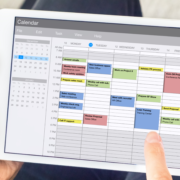Connecting with Your Co-workers When You Work Remotely
By Julia Lee
There’s a lot that the pandemic has changed, and one of the most impactful and notable changes has to do with where we work. For many of us, gone are the days of commuting to an office space. We’re now working from home.
There’s so much to love about working remotely and having more flexibility in our day. For our family, since my husband stopped making the 1.5-hour commute to the city, he’s able to attend our children’s practices and games, he and I enjoy lunch together occasionally, and we have more family time. But one huge challenge of working remotely is connecting with our co-workers, collaborating as a team, and building a work culture. This is especially difficult if you work for a completely remote company or are new to your job and have never actually even met your co-workers IRL (in real life).
So, what are some practical ways to connect with colleagues while working from home?
1. Turn on your camera for meetings.
I will state the most obvious and simplest action first: whenever possible, make it a habit to turn your camera on for meetings. This is something that we can easily overlook as important. There is so much temptation to turn the camera off (bad hair day, don’t feel like wearing make-up, etc.) and certainly there are times when you will have to join a meeting with the camera off, but this should be an exception, not the rule. The camera gives a small glimpse into your personal space and gives your remote co-workers a chance to get a better sense of who you are. It allows them to get to know you better simply by being able to see your facial expressions, the way you use hand gestures, the small things about you that make you, you. Utilizing your camera also shows your co-workers that you are paying attention to what they are saying and that you give importance to things that are being said in the meeting. This simple action is one of those things that once you get in the habit, it’s hard to break. While there is nothing that can quite replace face-to-face interactions, video is so helpful in engaging with your co-workers when you can’t physically share the same space.
2. Get to know your co-workers by asking questions and really listening.
This sounds so simple and easy, but it’s not. As the mother of a middle school daughter, I’m witnessing the highs and lows of developing and maintaining friendships at that age. They’re learning how to develop relationships with their peers and teachers, how to approach people with different opinions while still being true to yourself – all while navigating the pressures of this technology-driven world that looks similar yet so different from what I remember as a teen. As I think about some of my recent conversations with my middle schooler, I realize that some of the same principles of building friendships can apply to forming a stronger connection with our co-workers while working remotely from home.
One of the most important aspects to connecting with others is active listening. This is a selfless act that requires you to quiet your own thoughts and agenda and really focus in on someone else. It’s easy to just jump into a meeting, get to the point, and get things done so you can move ahead with all the other items on your daily to-do list. What’s not easy is to take the time to ask how other people are really doing from time to time, such as how their little one did at drop-off or how the remodeling of their home is going – and then pausing to really listen to their responses. At times there are fires to put out and you need to get to business, but more often than not we can spare a few minutes to get to know the person we work with better. This is more than a perfunctory “How are you?” It involves actively engaging and being present, asking questions, wanting to get to know the other person, and spending the energy and time it takes to develop a relationship. This small act can help build a foundation for a strong collaborative work environment even if you aren’t in the same building, and you may also find that you’ve gained a friend in the process. It’s also such a rare act in this age of hashtags and click-bates, but ultimately, we all crave the connection.
3. It’s ok not to be perfect, so don’t try so hard to pretend that you are.
We all make mistakes, and we all have our strengths and weaknesses. You might be super detail-oriented or learn new software programs with ease, but struggle with coming up with solutions on the fly, freeze-up at big client meetings, etc. Of course, at work, there are clients to appease and deadlines to meet, but with your team of colleagues, it’s OK to admit you are struggling with a certain project or a task. That’s what makes a great team! There will be some things you excel at and some things at which someone else on your team is a pro. That’s the reason why we work in teams and collaborate. And when you let your guard down, others will too, and in turn this will help strengthen your team overall. As I recently told my daughter, people are more attracted to someone who is comfortable in their own skin and can laugh at themselves.
4. Give your co-workers the benefit of the doubt.
Do you have a co-worker that always seems to be late to meetings? Did someone on your team sound annoyed when you suggested a change? Did you get a curt and short email as a response that you felt was uncalled for? I think all of us have these types of work experiences. When working virtually, there is a lot about the other person you may not know. When you are feeling this way, try to do your best to give everyone the benefit of the doubt. When you share the same space, you get to know things about your co-workers that you otherwise wouldn’t know working remotely. You might overhear a phone call from school about one of their kids having issues with a classmate, you can see the stress on your co-worker’s face as they try to coordinate who will be driving their sick parent to a doctor’s appointment, you observe them frantically trying to wrap up their work so they can leave on time to make it to a football game, etc. Working remotely, you don’t always really know what other challenges your co-workers are going through and it’s easy to assume things or feel frustrated. So a good rule of thumb is to give everyone room to be a little cranky, a little late, less put-together than usual. Everyone has bad days. We each have gone through different challenges in the last year and the more we can support one another, the better we all will be as a team.
5. Connect IRL when and if possible (even if it’s small pockets of the team).
Do you have a few co-workers that live close enough for you to occasionally meet in person? Take advantage of the proximity and go out for a walk at the park (maybe bring along those adorable COVID pups), meet for coffee or lunch or do something fun together. As much as there is to love about working from home, nothing can replace human face-to-face interaction to help build a connection with those you work with and spend so much time with.
As an HR professional, I know first-hand how important it is to connect with your co-workers on multiple levels. Working remotely has definitely impacted the work culture, but if you try, you can build strong connections with your colleagues – even if you haven’t yet met them IRL.
 En Español
En Español









